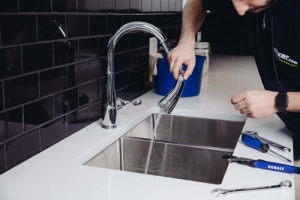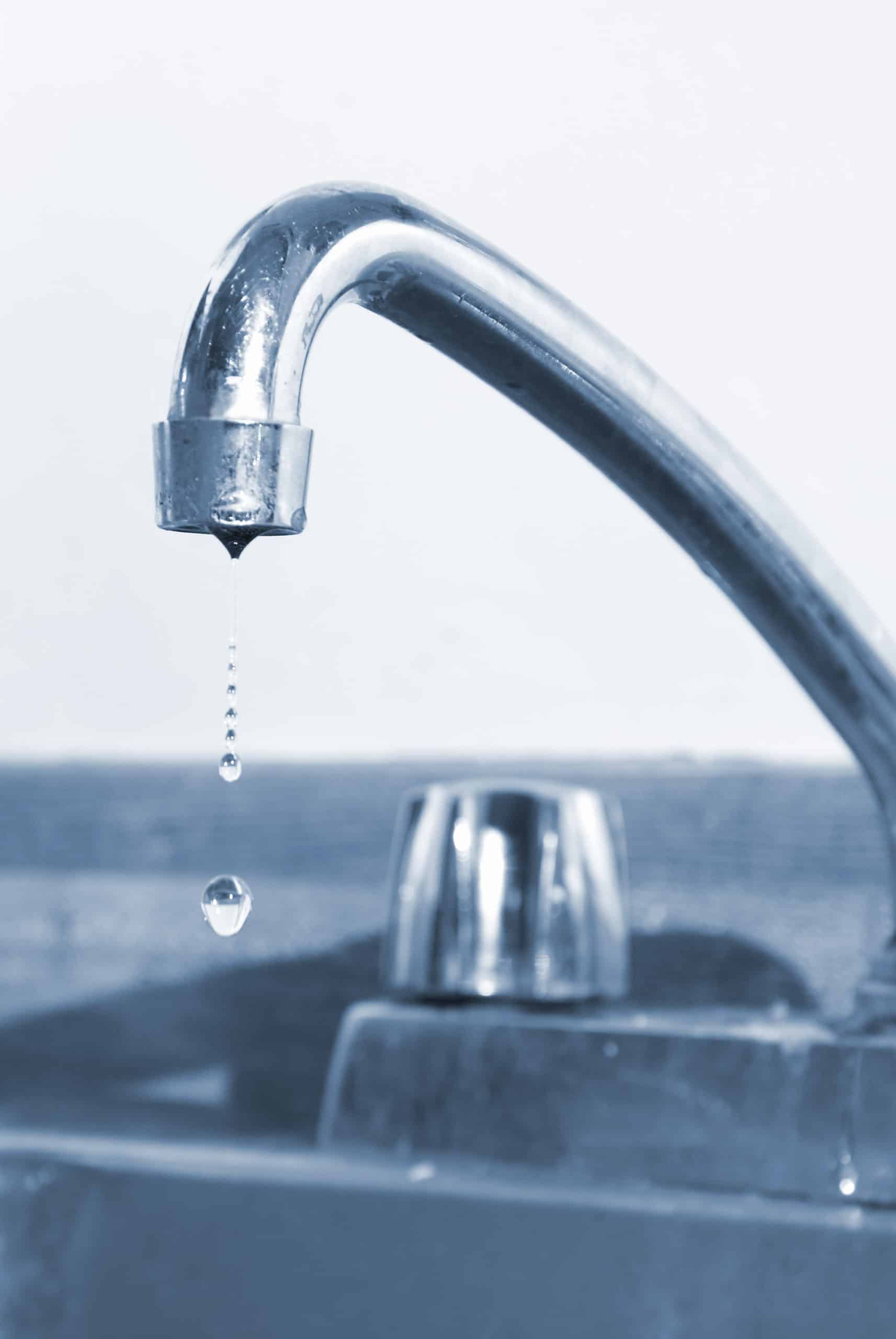They are making a few good points regarding How to Fix a Dripping or Leaky Faucet overall in this post followed below.

Dripping taps may appear like a small inconvenience, however their influence exceeds just the nuisance of the audio. From drainage to incurring unneeded economic costs and health and wellness threats, disregarding a leaking faucet can result in numerous repercussions. In this article, we'll look into why it's important to resolve this common home problem without delay and successfully.
Waste of Water
Ecological Impact
Leaking faucets add substantially to water wastage. According to the Environmental Protection Agency (EPA), a solitary tap dripping at one drip per secondly can squander greater than 3,000 gallons of water per year. This not only strains water resources however also impacts communities and wild animals based on them.
Step-by-Step Overview to Dealing With a Dripping Faucet
Tools Required
Before attempting to deal with a trickling faucet, collect the essential tools, consisting of an adjustable wrench, screwdrivers, substitute components (such as washing machines or cartridges), and plumber's tape.
Common Tap Issues and Their Solutions
Determine the sort of tap and the particular concern causing the drip. Usual problems consist of worn-out washing machines, rusty valve seats, or malfunctioning O-rings. Refer to producer instructions or online tutorials for detailed assistance on repair services.
Financial Costs
Boosted Water Expenses
Past the ecological impact, leaking faucets can pump up water costs significantly. The gathered wastage with time translates into greater energy expenses, which might have been stayed clear of with timely repairs.
Possible Property Damage
In addition, extended leaking can bring about damage to components and surface areas surrounding the faucet. Water build-up can cause discoloration, corrosion, and also architectural concerns if left unattended, leading to extra fixing prices.
Health Issues
Mold And Mildew and Mold Development
The consistent presence of moisture from a trickling tap develops a perfect atmosphere for mold and mildew and mold development. These fungis not just endanger interior air top quality yet also pose health dangers, especially for people with breathing problems or allergic reactions.
Waterborne Illness
Stationary water in leaking taps can end up being a breeding ground for germs and other pathogens, enhancing the risk of waterborne illness. Pollutants such as Legionella germs prosper in stagnant water, potentially resulting in serious illnesses when ingested or breathed in.
Do it yourself vs. Expert Repair service
Benefits and drawbacks of Do It Yourself Repair Work
While some may attempt to fix a dripping tap themselves, do it yourself repair services include their own set of obstacles. Without correct expertise and tools, DIY efforts can aggravate the problem or cause incomplete repairs, lengthening the trouble.
Benefits of Hiring a Specialist Plumber
Working with an expert plumber ensures that the underlying source of the leaking faucet is resolved successfully. Plumbings possess the knowledge and tools to identify and repair tap issues successfully, saving time and decreasing the danger of additional damages.
Environmental Duty
Private Payment to Conservation
Taking responsibility for dealing with leaking taps lines up with more comprehensive efforts towards water conservation and ecological sustainability. Every individual's activities collectively make a considerable impact on protecting precious resources.
Sustainable Living Practices
By focusing on prompt repair services and adopting water-saving routines, people contribute to lasting living practices that profit both existing and future generations.
Preventive Measures
Normal Maintenance Tips
To avoid trickling faucets, do routine maintenance such as cleansing aerators, inspecting for leakages, and changing worn-out parts immediately. Additionally, think about setting up water-saving tools or upgrading to much more reliable components.
Relevance of Prompt Services
Dealing with trickling taps as soon as they're seen prevents additional water waste and prospective damages, ultimately saving both water and money in the future.
Influence On Property Value
Assumption of Well-Maintained Residential Or Commercial Property
Maintaining a residential or commercial property in good condition, consisting of resolving maintenance problems like dripping taps, boosts its regarded worth and desirability among potential buyers or renters.
Influence on Resale Value
Residences with well-kept plumbing fixtures, including taps, command higher resale values in the property market. Addressing dripping taps can add to a favorable impact throughout residential or commercial property evaluations and settlements.
Final thought
Dealing with a dripping faucet goes beyond mere convenience; it's an essential action towards saving water, decreasing financial costs, and safeguarding wellness and building. Whether with DIY repairs or professional aid, doing something about it to take care of dripping taps is a tiny yet impactful method to promote liable stewardship of sources and contribute to a much healthier, a lot more sustainable future.
How to Fix a Leaky Faucet: Step-by-Step Repair Guide
A leaky faucet may seem like a simple annoyance, but if it's not fixed promptly, that leak could cost hundreds to potentially thousands. From water damage to mold, mildew, and high water bills, even a tiny leak can be catastrophic if left unattended. Damage like this can even affect the overall value of your home, so it's important to take the right approach for leaky faucet repair. You may need the help of a plumber in some cases, but we've got a few tips you can try on how to fix a leaky faucet before calling the pros.
Four Faucet Types
When you're learning how to fix a leaky faucet, the first step is knowing what kind of faucet you're working with! There are four common types.
Cartridge Faucets
Cartridge faucets come in one- or two-handled varieties. In one-handled cartridge faucets, hot and cold water combines in a single cartridge. In the two-handled versions, hot and cold water are controlled separately and mixed in the faucet.
Ball Faucets
Ball faucets have a single lever you push up and down to adjust the pressure and rotate to change the temperature. A slotted metal ball controls the amount of water allowed into the spout.
Compression Washer Faucets
They're the oldest type of faucet, but they're still used in many homes — especially older ones. Compression faucets have two separate handles that, when turned, raise or lower the washer that seals a water valve. This valve stops water from flowing through the faucet when it is turned off.
Disc Faucets
Disc faucets rarely need to be repaired due to their maintenance-free design. The water flow is controlled by two discs — the upper one raises and lowers against a fixed lower disc, creating a watertight seal. If your disc faucet starts leaking, you may need to replace the seals or clean residue buildup from the inlets.
Fixing a Leaky Faucet
Step 1: Turn Off the Water
Whether you're learning how to fix a leaky bathtub faucet or how to fix a leaky kitchen faucet, always turn off the water supply to your working area when you're fixing a leak. The last thing you want is a flood added to your list of things to fix.
Look for the shutoff valves below your sink or around the tub and turn them clockwise to stop the water flow. If your faucet doesn't have shutoff valves, you may need to turn off the water for the whole house. Check to make sure it's off by turning the faucet on. If nothing comes out, you're ready to start the repair.
Step 2: Take Apart the Faucet
How you disassemble your faucet depends on the type of fixture you have. You can use a flathead screwdriver to remove the caps on top of the handle or handles for cartridge and compression faucets. Inside, you should see handle screws. Unscrew these with a screwdriver to remove the handle.
Disc- and ball-style faucets will typically have an inlet screw near the handle, and removing that will reveal the interior of the faucet.
Detach the Valve Stem
For cartridge- and compression-style faucets, you'll see the inner valve stem or cartridge once you remove the faucet handles. If you have a compression faucet, unscrew the brass valve stem. If you have a cartridge faucet, pull out the cartridge. If your cartridge has been in place for a while, it may require some tools or extra force to remove it due to mineral deposits.
Examine and Replace Parts
Once you've removed the parts, check them out to confirm what needs to be replaced. You may see corroded rubber washers, O-rings, stems, or cartridges. On a ball-style faucet, check the seats and springs for damage.
If you need to repair a leaky disc faucet, check the inlet and seals on the lower disc.
Once you determine what parts must be replaced, visit your local hardware store. Bring the damaged parts with you to ensure you can purchase the correct components to replace them.
Clean Valves and Faucet Cavity
If you've removed a stem or cartridge, you may notice mineral buildup in the faucet's threads. Use white vinegar to clean the valve seat by soaking it for a few minutes, then scrub it away with a soft toothbrush and rinse with warm water. You can also clean the interior of the faucet in the same way.
Reassemble the Faucet
Once your faucet is cleaned and the required parts have been replaced, it's time to reassemble it. Put the pieces back together and slowly turn the water supply back on. Doing this slowly is crucial because too much initial water pressure can damage the new hardware you've just installed.
https://homewarranty.firstam.com/blog/how-to-fix-leaky-faucet

We had been introduced to that write-up on What Causes Leaky Faucets & How To Fix Them from someone on a different domain. Loved our content? Please quickly share it. Let another person discover it. We truly appreciate reading our article about How to Fix a Dripping or Leaky Faucet .